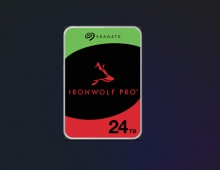SATA 3Gb/s, the Next Generation of Serial ATA Speed
1. Page 1

For host interfaces, the 3-Gbits/sec speed is necessary to meet the increasing performance requirements for bandwidth-intensive applications, such as IT and corporate data centers, health care service, manufacturing and financial real-time systems, and nearline data storage, as the amount of data that companies need to store, manage and keep readily available continues to increase. Serial ATA can help meet rising data throughput needs by doubling the speed of the data delivery path, enabling the transfer of more than 1.5 gigabits of data in aggregated arrays and other multi-drive configurations. From the host side, SATA 3Gb/s essentially provides a larger pipe to move more data.
Benchmark tests today show that in multi-drive configurations, SATA 1.5Gb/s disc drives can reach data transfer speeds of greater than 200 megabytes per second (Mbytes/sec) when their individual maximum data transfer rates are aggregated into a single pipe to the PC or server host. Keep in mind the individual drives may be comparatively lower, but the array performance is limited only by the number of drives in the array and by the speed of the underlying host interface rate. For the best performance, large numbers of drives can be connected and their data aggregated into a larger host interface.
Multiple drives connect to a SATA 1.5Gb/s or SATA 3Gb/s Port Multiplier. The collective drive data rate with the SATA 3Gb/s Port Multiplier equals 240 Mbytes/sec into the host controller. By contrast, the collective drive data rate in a single-drive environment would be around 60 Mbytes/sec.
This article is by Seagate and you can find it here.





















